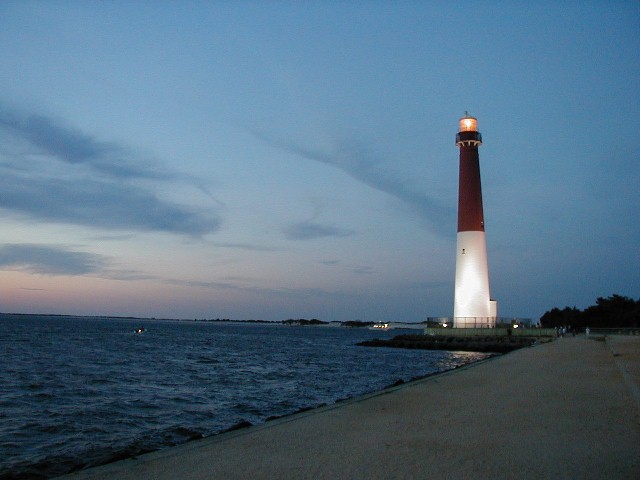Brant Beach

The development of the original lighthouse began in June 1834 with the appropriation of $6,000 from Congress. The 40-foot-tall (12 m) lighthouse was commissioned the next year, though mariners at the time considered the building’s non-flashing, fifth-class light to be inadequate. Because of the strong currents in the inlet, the lighthouse was built 900 feet (270 m) away from the water; but within ten years only 450 feet (140 m) separated the tower from the water.In 1855, Lt. George G. Meade, an Army engineer and later a Union General in the American Civil War, was assigned to design a new lighthouse. He was chosen largely because of his recent design of Absecon Light. Meade completed the construction plans in 1855 and work began in late 1856. Because of continuing erosion during its construction, the new lighthouse was located about 100 feet (30 m) south of the original structure, the site of which is now submerged. During construction, in June 1857, the light in the original structure was relocated to a temporary wooden tower located nearby. This was prompted by the encroaching seas which threatened the original lighthouse and ultimately caused the tower to collapse into the water later that year. Because of the rough waters of the area, several jetties have been built throughout the history of both lighthouses.
Barnegat Light was commissioned on January 1, 1859. The tower light was 172 feet (52 m) above sea level and the lighthouse itself was 163 feet (50 m) tall, four times taller than the original. The new light was a first-order flashing Fresnel lens, which stood about 12 feet (3.7 m) tall. The total cost of the project was about $40,000, with the lens alone costing $15,000. The current lighthouse is really two towers in one: the exterior conical tower covers a cylindrical tower on the inside.
